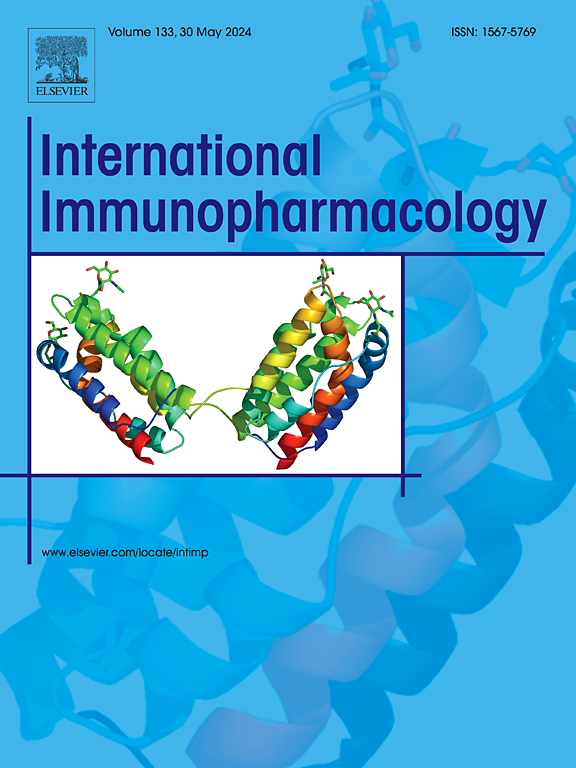Structural characterization of raw and wine-steamed Polygonatum cyrtonema Hua oligosaccharides and their bioactivity on immune regulation via modifying the gut microbiota
IF 4.8
2区 医学
Q2 IMMUNOLOGY
引用次数: 0
Abstract
Polygonatum cyrtonema Hua (PC) is a traditional Chinese medicine with a long history of use as pharmaceuticals or functional foods. Wine steaming is the main processing method of PC, which changes the structure of polysaccharides and oligosaccharides in PC and enhances biological activities. This study investigated the structural characterization of raw and wine-steamed PC oligosaccharides and the differences in the immunomodulatory effects using cyclophosphamide (CTX)-induced immunosuppression rat model. The oligosaccharides content and molecular weight of PC after wine steaming decreased, the proportion of oligosaccharides in total sugars and the reducing sugars content increased, and the monosaccharides composition of oligosaccharides changed. The raw Polygonatum cyrtonema Hua oligosaccharides (PCCO) and the wine-steamed Polygonatum cyrtonema Hua oligosaccharides (PCWO) exerted regulatory effects on organ index, immunoglobulin G (IgG), complement 3 (C3) spleen and colon tissue morphology, hematopoietic function of immunosuppressive rats treated by cyclophosphamide (CTX). Both PCCO and PCWO significantly regulated and improved the diversity and abundance of gut microbiota in immunosuppressed rats and increased the content of short-chain fatty acids (SCFAs) in the feces of rats, and the regulating effect of PCWO was better than PCCO. Differential microbiota analysis showed that PCWO could promote the proliferation of Bifidobacterium, Bacteroides, Oscillibacter, Roseburia, and Alistipes. In summary, the difference in the structural characteristics of PC oligosaccharides might be the reason for immune enhancement. This study could provide a theoretical basis for clarifying the scientific connotation of wine steaming to enhance the efficacy of PC, and promote the application of wine-steamed PC as an immunomodulator in pharmaceuticals or functional foods.

求助全文
约1分钟内获得全文
求助全文
来源期刊
CiteScore
8.40
自引率
3.60%
发文量
935
审稿时长
53 days
期刊介绍:
International Immunopharmacology is the primary vehicle for the publication of original research papers pertinent to the overlapping areas of immunology, pharmacology, cytokine biology, immunotherapy, immunopathology and immunotoxicology. Review articles that encompass these subjects are also welcome.
The subject material appropriate for submission includes:
• Clinical studies employing immunotherapy of any type including the use of: bacterial and chemical agents; thymic hormones, interferon, lymphokines, etc., in transplantation and diseases such as cancer, immunodeficiency, chronic infection and allergic, inflammatory or autoimmune disorders.
• Studies on the mechanisms of action of these agents for specific parameters of immune competence as well as the overall clinical state.
• Pre-clinical animal studies and in vitro studies on mechanisms of action with immunopotentiators, immunomodulators, immunoadjuvants and other pharmacological agents active on cells participating in immune or allergic responses.
• Pharmacological compounds, microbial products and toxicological agents that affect the lymphoid system, and their mechanisms of action.
• Agents that activate genes or modify transcription and translation within the immune response.
• Substances activated, generated, or released through immunologic or related pathways that are pharmacologically active.
• Production, function and regulation of cytokines and their receptors.
• Classical pharmacological studies on the effects of chemokines and bioactive factors released during immunological reactions.

 求助内容:
求助内容: 应助结果提醒方式:
应助结果提醒方式:


